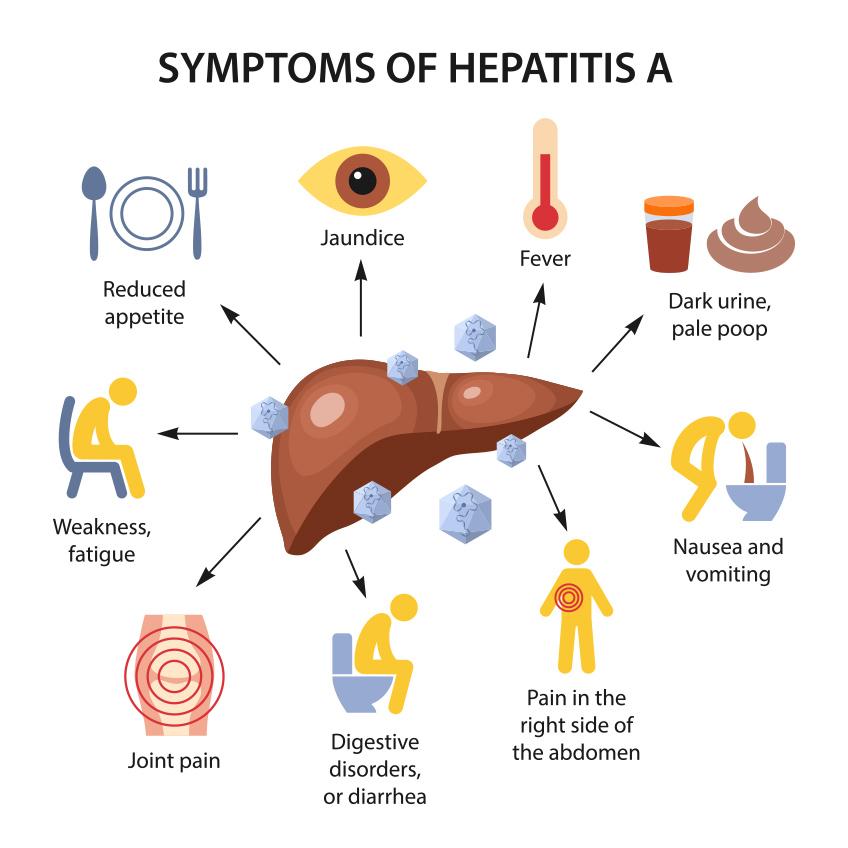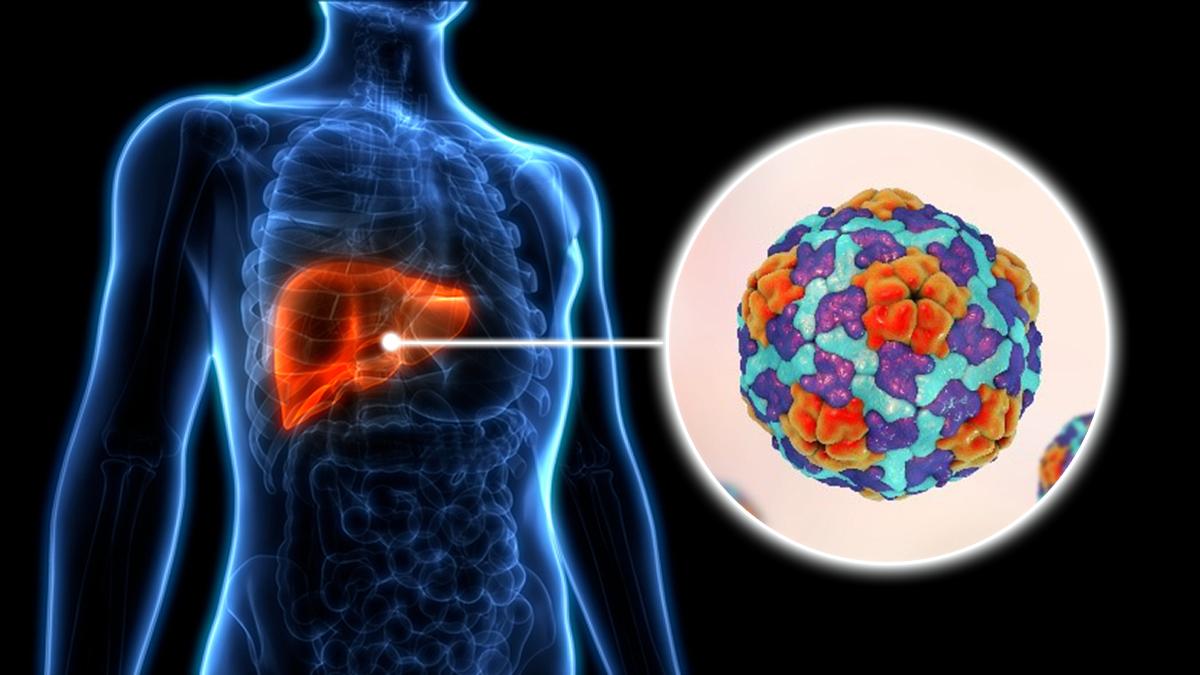In the intricate tapestry of global health, certain pathogens weave threads that both challenge and enlighten our understanding of disease transmission and prevention. Among these, Hepatitis A stands out as a viral contender, sparking interest not only for its impact on individual health but also for its broader implications on public wellness. As a highly contagious liver infection, Hepatitis A is often associated with unsanitary conditions and can be transmitted through something as simple as contaminated food or water. In this article, we will delve into the nuances of Hepatitis A, exploring its transmission, symptoms, prevention strategies, and the ongoing efforts to combat its spread. By shedding light on this infectious agent, we aim to empower readers with knowledge that can ultimately foster healthier communities and informed choices.
Understanding Hepatitis A and Its Transmission Pathways
Hepatitis A is a viral infection that primarily affects the liver, leading to symptoms such as fatigue, nausea, and abdominal discomfort. The virus is known for its resilience and can survive outside the body for several months. Understanding how this virus spreads is crucial for prevention. The primary transmission pathways include:
- Fecal-Oral Route: This is the most common method of transmission, often occurring through contaminated food or water.
- Close Contact: The virus can be spread through direct contact with an infected person, especially in settings with poor sanitary conditions.
- Contaminated Surfaces: Touching surfaces or objects contaminated with the virus, such as utensils or toys, can also lead to infection.
To illustrate the potential transmission risks, consider the following table that highlights common sources of Hepatitis A infection:
| Source | Risk Level |
|---|---|
| Uncooked or Raw Shellfish | High |
| Drinking Contaminated Water | High |
| Undercooked Food | Medium |
| Direct Contact with Infected Individuals | High |
| Sharing Personal Items | Medium |
Recognizing Symptoms: Early Signs of Hepatitis A Infection
Hepatitis A infection often presents itself with a variety of symptoms that can easily be mistaken for other illnesses. Individuals may experience fatigue, nausea, and loss of appetite in the initial stages. These early signs typically appear two to six weeks after exposure to the virus. Other common symptoms include:
- Fever: A mild to moderate rise in body temperature.
- Abdominal pain: Particularly in the area of the liver, which is located on the right side of the abdomen.
- Dark urine: This can be an indicator of liver involvement.
- Pale stools: This may occur due to impaired bile flow.
As the infection progresses, symptoms can become more pronounced. Individuals may notice jaundice, which is characterized by a yellowing of the skin and eyes. It’s important to monitor and recognize these changes. Here’s a quick reference table to summarize the key symptoms:
| Symptom | Duration |
|---|---|
| Fatigue | Days to weeks |
| Nausea | Days |
| Jaundice | Days to weeks |
| Dark urine | Days to weeks |
Preventive Measures: Effective Strategies to Avoid Hepatitis A
To effectively minimize the risk of contracting Hepatitis A, it is essential to adopt a combination of good personal hygiene and vaccination strategies. Regularly washing hands with soap and water, especially before meals and after using the restroom, significantly reduces the likelihood of virus transmission. Additionally, avoid consuming food and beverages from questionable sources. Consider the following key practices:
- Vaccination: Get vaccinated against Hepatitis A, especially before traveling to high-risk areas.
- Food Safety: Ensure food is cooked thoroughly and avoid raw or undercooked shellfish.
- Clean Water: Drink bottled or boiled water in regions where sanitation is poor.
- Personal Hygiene: Use hand sanitizer when soap and water are not available.
Awareness of potential exposure is another critical component of prevention. It is vital to stay informed about outbreaks in your community or during travel. Practicing caution in shared environments can also be beneficial. Consider these preventive tips:
| Preventive Action | Description |
|---|---|
| Avoid Crowded Places | Limit exposure in areas with high risk of infection. |
| Travel Precautions | Research vaccination requirements and health advisories before traveling. |
| Educate Others | Share information about Hepatitis A and its prevention to raise awareness. |
Vaccination Insights: Importance of Immunization Against Hepatitis A
Vaccination plays a crucial role in safeguarding public health, particularly in the case of viral infections like Hepatitis A. This liver infection, primarily spread through contaminated food and water, can lead to serious health complications. By choosing to get vaccinated, individuals can significantly reduce their risk of infection and contribute to community immunity. The benefits of Hepatitis A vaccination include:
- Prevention of Infection: The vaccine effectively protects against the Hepatitis A virus, preventing the onset of symptoms.
- Reduced Transmission: Widespread immunization helps to curb the spread of the virus within communities.
- Long-lasting Protection: A single dose of the vaccine provides immunity that can last for years.
Particularly important for travelers, healthcare workers, and those in high-risk environments, the Hepatitis A vaccine serves as a vital public health tool. Awareness about vaccination can further enhance its impact. Consider the following statistics about Hepatitis A and vaccination:
| Statistic | Value |
|---|---|
| Current Vaccination Rate | Over 90% in high-risk areas |
| Cases Prevented Annually | Approximately 20,000 |
| Duration of Immunity | 10-20 years |
Managing Hepatitis A: Treatment Options and Supportive Care
When it comes to managing Hepatitis A, it’s important to remember that there is no specific antiviral treatment for the virus. Instead, the focus is primarily on supportive care to alleviate symptoms and ensure a smooth recovery. Patients are encouraged to rest and stay hydrated, as well as to follow a balanced diet that supports liver health. Here are some essential aspects of supportive care:
- Hydration: Drink plenty of fluids to prevent dehydration, especially if experiencing nausea or vomiting.
- Nutrition: Incorporate nutrient-rich foods that are easy on the liver, such as fruits, vegetables, and whole grains.
- Symptom Management: Over-the-counter medications may help alleviate fever and discomfort, but consult a healthcare provider before use.
- Rest: Adequate rest is crucial for recovery, allowing the body to heal effectively.
In addition to these supportive measures, education plays a vital role in managing Hepatitis A. Awareness of hygiene practices can help prevent transmission to others, which is especially important for those who are in close contact with the infected individual. Support groups and counseling may also provide emotional and psychological assistance during recovery. Consider the following resources to enhance your understanding and ability to cope with Hepatitis A:
| Resource | Type |
|---|---|
| CDC Hepatitis A Information | Official Guidelines |
| Local Health Department | Community Support |
| Online Forums | Peer Support |
Public Health Perspectives: Addressing Hepatitis A Outbreaks in Communities
Communities facing hepatitis A outbreaks must adopt a multifaceted approach to effectively combat this public health challenge. Key strategies include increasing vaccination rates, ensuring accessible hygiene resources, and enhancing public awareness campaigns. Vaccination is paramount; health departments can facilitate free or low-cost vaccination clinics, targeting high-risk populations and communities with lower immunization rates. Additionally, providing resources such as soap, hand sanitizer, and educational materials about proper hygiene can significantly reduce transmission rates.
Another critical component is fostering collaboration among local governments, healthcare providers, and community organizations. This partnership model can lead to the establishment of support systems that promote health education, screening, and treatment options. Regular community forums and workshops can inform residents about hepatitis A symptoms, prevention, and the importance of reporting cases. By leveraging community strengths and resources, we can create a resilient network capable of addressing not only hepatitis A but also other public health concerns.
| Strategy | Description |
|---|---|
| Vaccination Clinics | Free or low-cost services to increase immunization. |
| Hygiene Resources | Distribution of soap and sanitizer to promote cleanliness. |
| Public Awareness | Campaigns to educate on symptoms and prevention methods. |
| Community Collaboration | Working with local organizations to provide support. |
Q&A
Q&A: Understanding Hepatitis A (Hep A)
Q: What is Hepatitis A?
A: Hepatitis A, commonly known as Hep A, is a highly contagious liver infection caused by the Hepatitis A virus (HAV). It is primarily transmitted through the ingestion of contaminated food or water, or through direct contact with an infectious person.
Q: How is Hepatitis A transmitted?
A: Hep A is often spread through the fecal-oral route. This means that consuming food or water contaminated with the virus can lead to infection. It can also be contracted by close personal contact with an infected individual, such as through sharing utensils or engaging in intimate activities.
Q: What are the symptoms of Hepatitis A?
A: Symptoms of Hepatitis A can range from mild to severe and typically appear 2 to 6 weeks after exposure. Common symptoms include fatigue, abdominal discomfort, nausea, vomiting, loss of appetite, and jaundice (yellowing of the skin and eyes). However, some individuals, especially young children, may not exhibit any symptoms.
Q: How long does Hepatitis A last?
A: The duration of Hepatitis A can vary. Most people recover within a few weeks to a few months. However, some individuals may experience longer-lasting symptoms, particularly if they have underlying health issues.
Q: Is there a vaccine for Hepatitis A?
A: Yes, there is a highly effective vaccine for Hepatitis A that can provide long-term protection. It is recommended for travelers to certain regions, individuals with chronic liver disease, and those who may be at increased risk of infection.
Q: How can one prevent Hepatitis A infection?
A: Preventing Hep A involves practicing good hygiene, such as washing hands with soap and water, especially before eating or after using the restroom. Vaccination is also a key preventive measure, along with avoiding consuming food and water from questionable sources, particularly in areas with poor sanitation.
Q: What should I do if I think I have Hepatitis A?
A: If you suspect you have Hepatitis A, it’s important to consult a healthcare professional for proper diagnosis and management. Blood tests can confirm the infection, and they may provide guidance on treatment and preventing the spread to others.
Q: Can Hepatitis A lead to chronic liver disease?
A: Unlike Hepatitis B and C, Hepatitis A does not lead to chronic liver disease. Most people recover completely without lasting effects, although there is a small chance of severe illness requiring hospitalization.
Q: What is the public health response to Hepatitis A outbreaks?
A: Public health officials monitor Hepatitis A outbreaks through surveillance and vaccination campaigns. In the event of an outbreak, they may implement measures such as food recalls, public awareness campaigns, and vaccination drives to control the spread of the virus.
By understanding Hepatitis A, its transmission, prevention, and symptoms, we can better protect ourselves and our communities from this preventable infection. Stay informed and advocate for good hygiene practices and vaccination!
Concluding Remarks
Hepatitis A, while often overlooked, remains a crucial public health concern that warrants our attention and understanding. By recognizing the ways it can spread and the importance of vaccination, we empower ourselves and our communities to forge a path toward better health. As we navigate the complexities of global health, let us not forget the lessons learned from Hep A: prevention is always more effective than cure. So, whether you’re planning your next meal, traveling abroad, or simply engaging in daily interactions, take a moment to consider the impact of hygiene and vaccination. Together, we can build a healthier future, one informed choice at a time.
